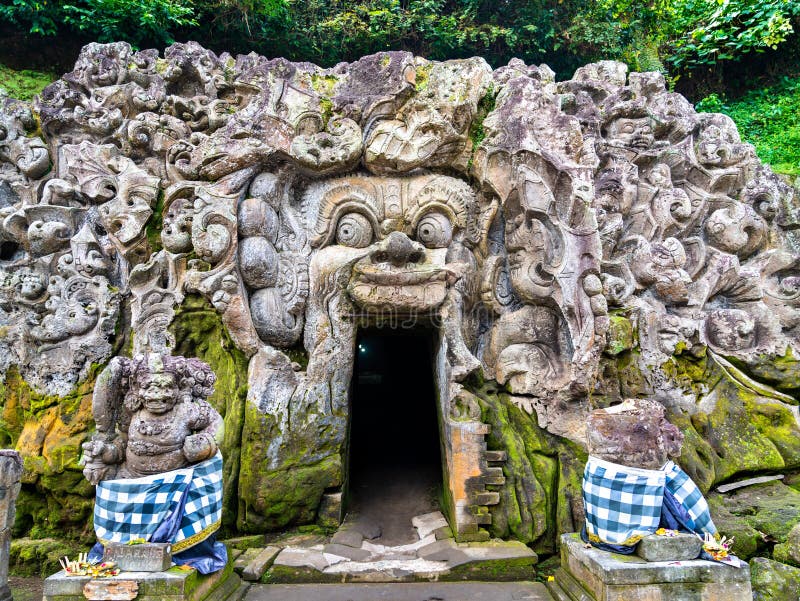
Revealing the Enigma: Goa Gajah – Elephant Cave Temple
Embark on a journey of mystique as we unravel the secrets within Goa Gajah, the famed Elephant Cave Temple in Bali. Nestled near Ubud, this ancient site is not just a temple; it’s a portal to a realm where spirituality, history, and myth converge.
Goa Gajah: Elephant Cave Temple: A Gateway to the Past
Step into the digital gateway of Goa Gajah: Elephant Cave Temple for a sneak peek into the historical richness and spiritual aura that define this sacred site. Explore insider insights, travel tips, and a visual journey that complements the enchanting experiences awaiting you.
Elephant Cave’s Architectural Marvel: Decoding the Stone Facade
The entrance to Goa Gajah is adorned with intricate stone carvings, each telling a story of cultural significance. The elephant figure, from which the temple derives its name, is just one element of a larger narrative etched into the walls. These stone reliefs serve as a visual tapestry, offering a glimpse into Bali’s artistic and historical heritage.
The Cave’s Mystical Interior: Navigating Spiritual Depths
As you enter the cave, the atmosphere shifts, enveloping you in a sense of mystery. The cave’s interior reveals ancient meditation chambers and sacred niches carved into the rock walls. These chambers are believed to have served as places for spiritual contemplation, emphasizing the temple’s role as a sanctuary for introspection.
Shiva Lingam and Ganesha: Deities in Stone
At the heart of the cave lies a sacred Shiva Lingam, symbolizing the Hindu god Shiva. Adjacent to it stands a statue of Ganesha, the elephant-headed deity. These divine representations add a spiritual layer to the cave’s ambiance, inviting visitors to connect with the Hindu pantheon and the temple’s religious significance.
Holy Bathing Pool: Purification Rituals at Tirta Empul
Goa Gajah is not just about stone structures; it features a bathing pool fed by the sacred springs of Tirta Empul. Pilgrims engage in purification rituals, cleansing themselves in the spring water before entering the cave. The synergy of natural elements and religious practices creates a unique and immersive experience.
The Enigmatic Caves and Crevices: Hidden Wonders Unveiled
Beyond the central cave, Goa Gajah conceals smaller caves and crevices waiting to be explored. These hidden spaces are adorned with carvings and statues, each with its own symbolic significance. Navigating through these lesser-known corners unveils the layers of history and spirituality woven into the temple’s ancient fabric.
Archaeological Discoveries: Tracing Goa Gajah’s Origins
Goa Gajah’s history is shrouded in mystery, with archaeological discoveries shedding light on its origins. The temple is believed to date back to the 11th century, making it a relic of Bali’s ancient past. Delving into the archaeological context adds depth to the temple’s narrative and its role in Bali’s cultural evolution.
Cultural Fusion: Goa Gajah as a Symbol of Syncretism
Goa Gajah stands as a testament to Bali’s cultural fusion, where indigenous beliefs merge with Hindu traditions. The syncretic nature of the temple reflects the harmonious coexistence of diverse cultural influences, creating a unique religious and artistic expression that defines Bali’s identity.
Photography Tips: Capturing the Essence of Goa Gajah
For photography enthusiasts, capturing the essence of Goa Gajah requires an understanding of its play of light and shadow, intricate carvings, and spiritual ambiance. While respecting the sacredness of the site, visitors can frame shots that encapsulate the mystique and architectural brilliance of this ancient temple.
Goa Gajah: A Spiritual Sojourn in Bali’s Heart
Goa Gajah isn’t just a stop on a tourist itinerary; it’s a spiritual sojourn into Bali’s heart. The blend of historical significance, architectural marvels, and sacred rituals creates an experience that transcends time. Whether you seek cultural insights, spiritual connection, or simply wish to unravel the mysteries of the past, Goa Gajah awaits, ready to weave its enchantment.


